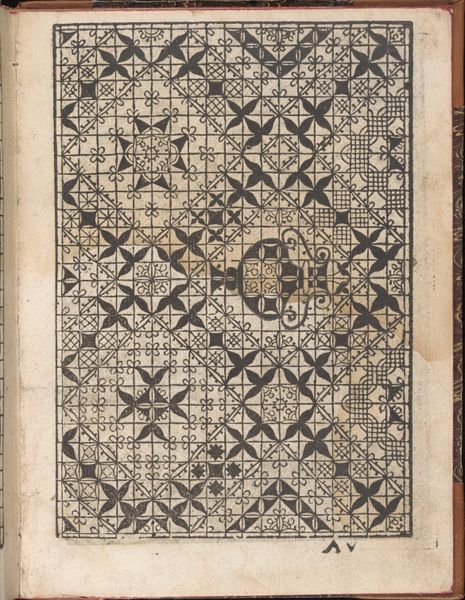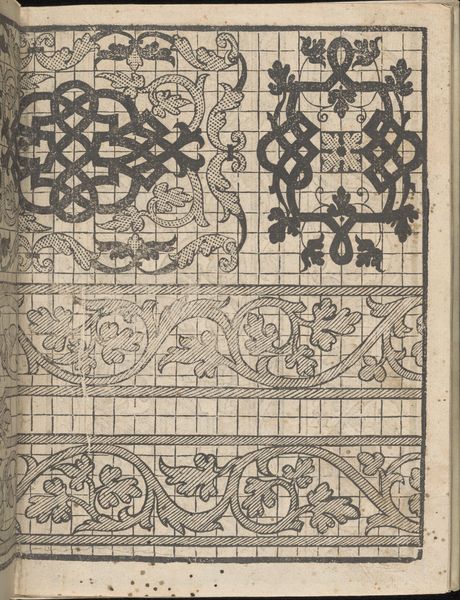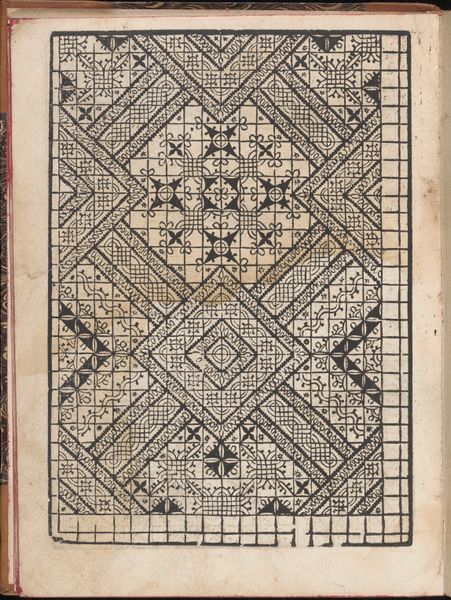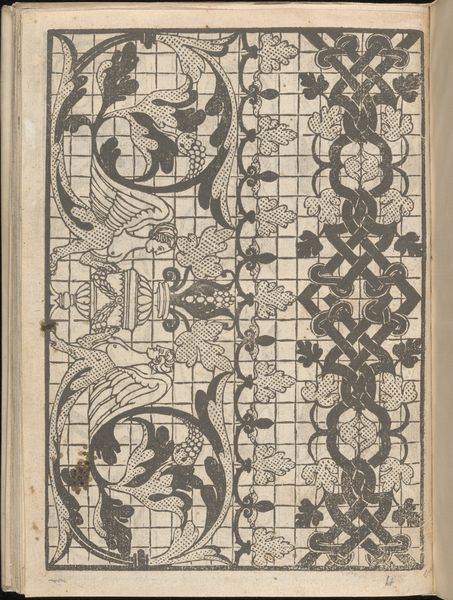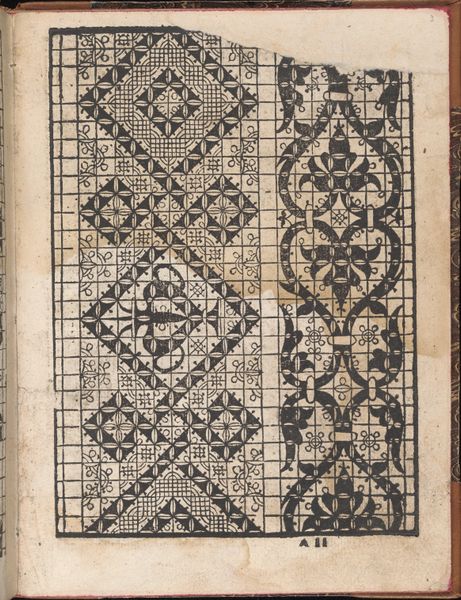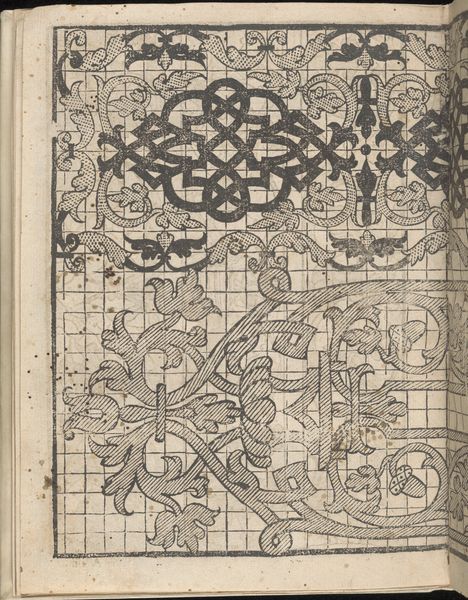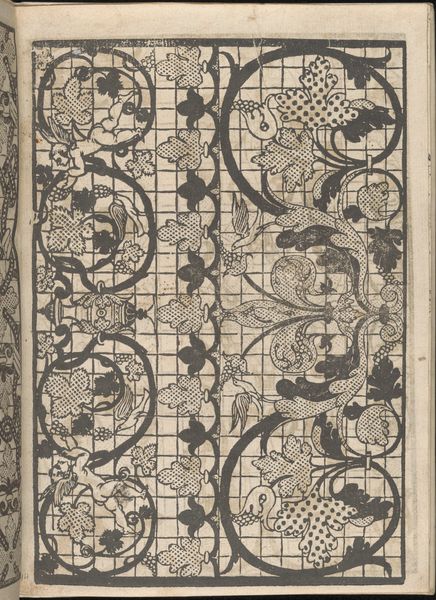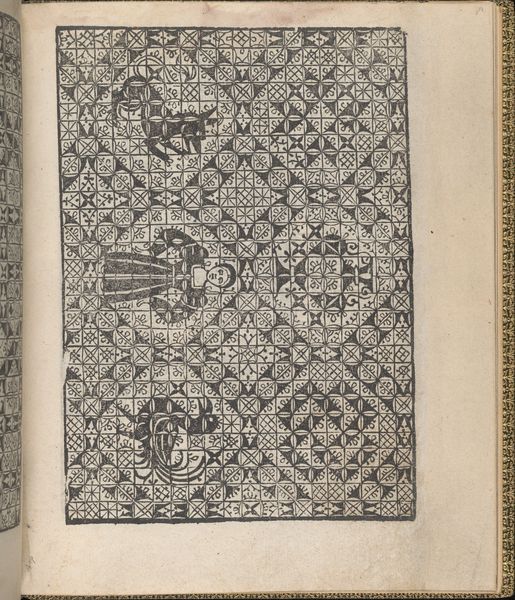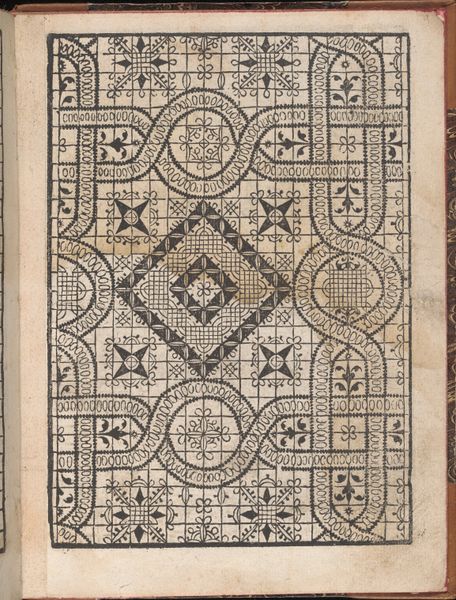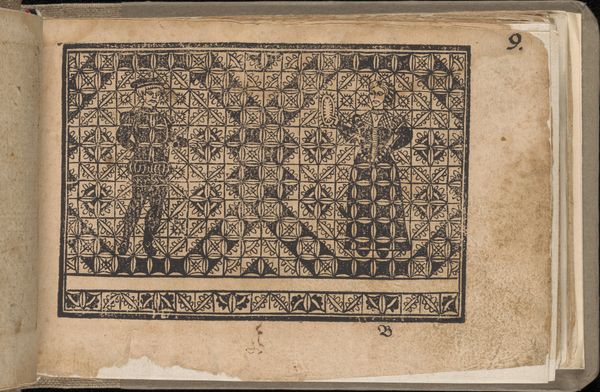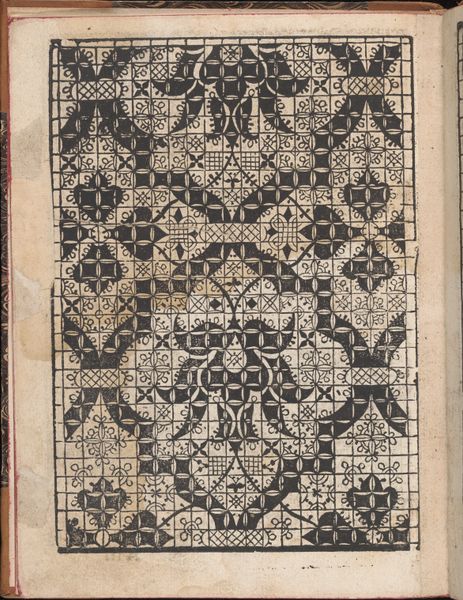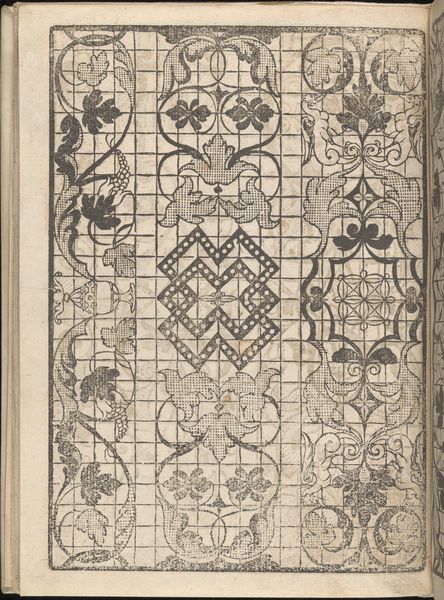
Spechio di pensieri delle belle et Virtudiose donne, page 8 (verso) 1546
0:00
0:00
drawing, print, woodcut
#
drawing
# print
#
book
#
vase
#
figuration
#
11_renaissance
#
linocut print
#
woodcut
#
line
#
italian-renaissance
Dimensions: Overall: 8 1/16 x 5 7/8 in. (20.5 x 15 cm)
Copyright: Public Domain
Editor: Here we have a page from "Spechio di pensieri delle belle et Virtudiose donne" – or "Mirror of the Thoughts of Beautiful and Virtuous Women" – dated 1546 by Matteo Pagano. It seems to be a woodcut print within a book. The dense, repeating geometric patterns make it feel quite rigid, despite the figures within. What catches your eye when you look at this, from a materialist perspective? Curator: I'm immediately drawn to the process of its creation. This isn't just an image; it's the result of labor, the transfer of design through a specific, repeatable medium. Consider the skill required to carve those intricate patterns into wood. This wasn't just about aesthetics; it was a commercial endeavor, producing pattern books aimed at a burgeoning class who would consume such images to express taste. Editor: So the material production itself tells a story about societal changes? Curator: Precisely. We see the democratization of art knowledge through printmaking. These books were pattern sources for embroidery and lacemaking – domestic crafts primarily performed by women. In challenging our traditional notions of high art, can we analyze the materials used for women's "lower" labor like stitching verses printmaking for consumption. It invites the questions of how and why material consumption evolves alongside the growth of consumer culture in 16th-century Italy? Editor: I see. So the very act of producing and consuming these prints redefines artistic boundaries and the social standing of craft. Curator: Exactly! By emphasizing these materials, the work process and their consumption within Italian culture allows us to understand it further. Editor: It’s interesting how focusing on the material shifts our understanding of the image entirely. Curator: It certainly reframes it! Instead of solely focusing on beauty or symbolism, we also get into how this particular mode of production reflects the emerging cultural needs and the role of material objects in shaping social roles.
Comments
No comments
Be the first to comment and join the conversation on the ultimate creative platform.
